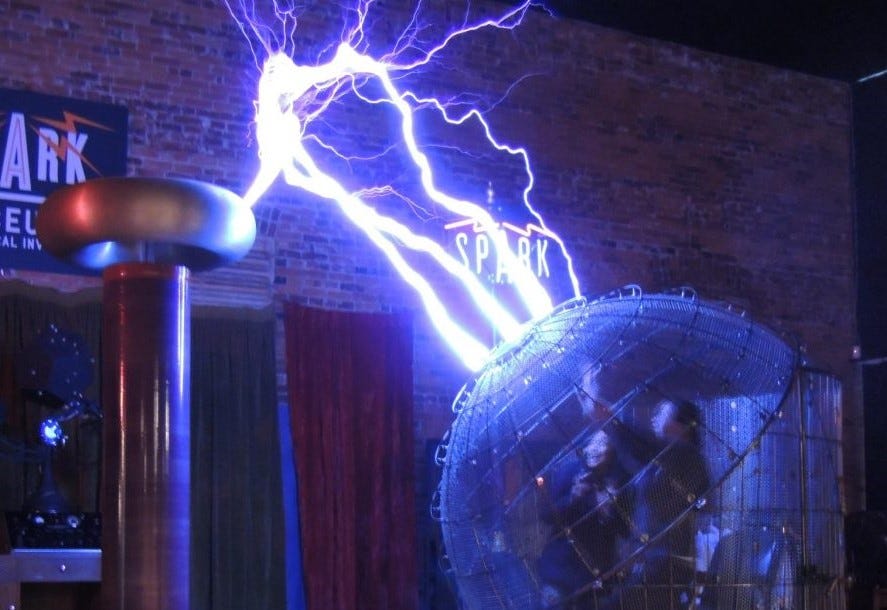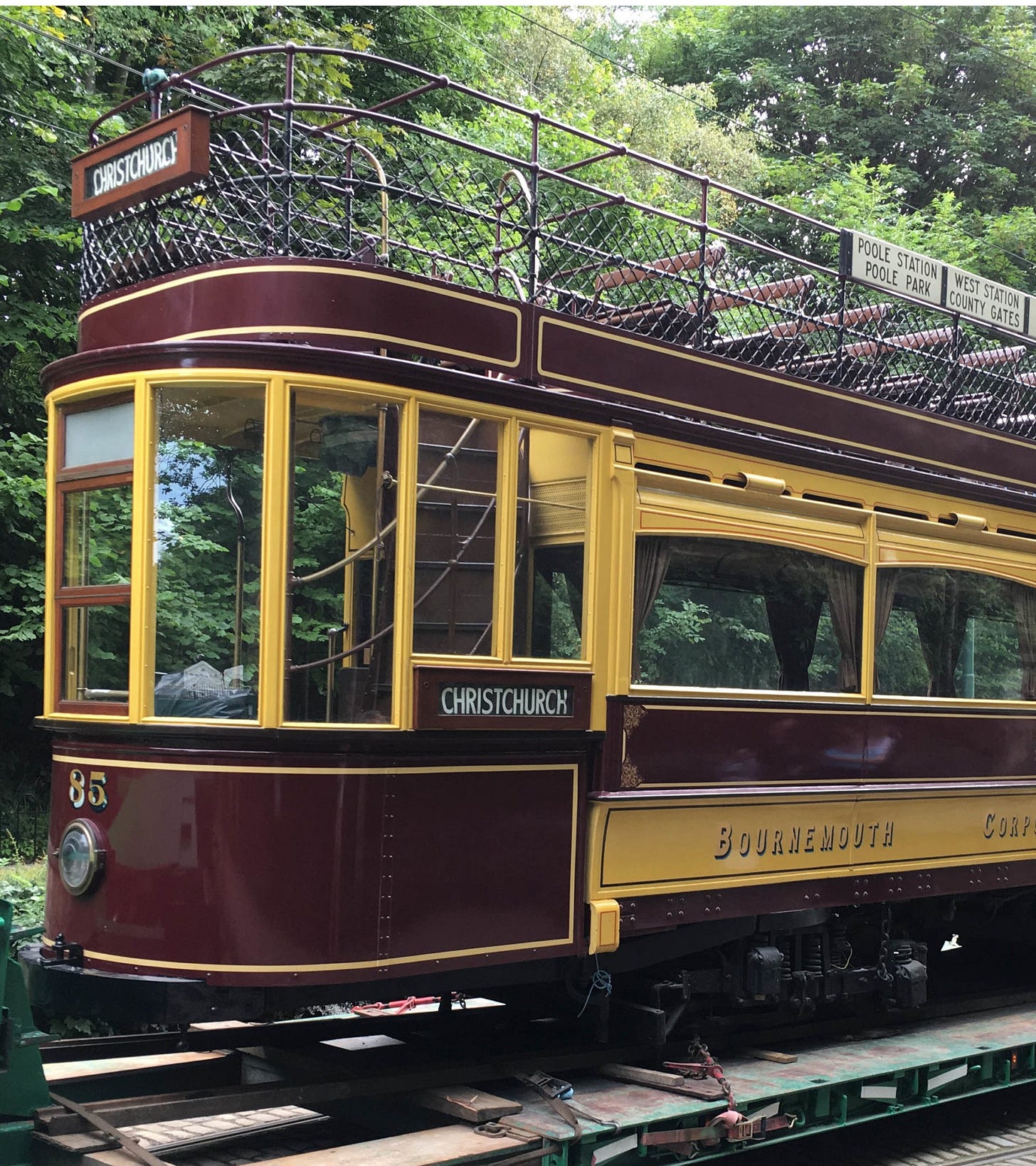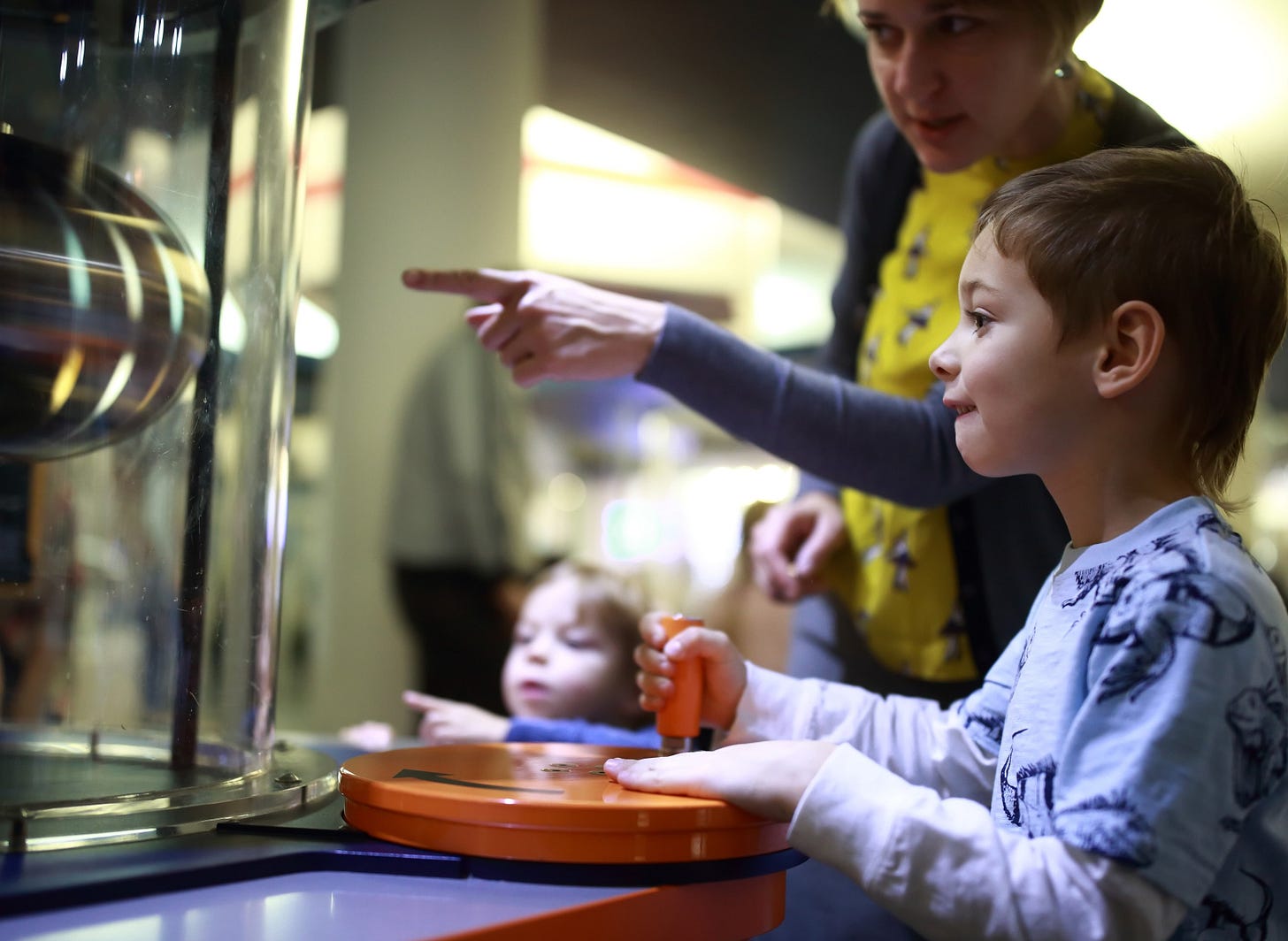Can you re-house an elderly museum exhibit?
After cats and dogs, now it is old heritage items looking for a 'forever home' as cash runs out

“Much-loved, elderly exhibit needs new home after years of faithful service” It’s not the sort of advert you normally see in the Lost and Found, but it’s the growing reality of a Museums’ crisis which has been unfolding in the heritage world.
Take the example of a once-popular and highly unusual museum on the South Coast. The Museum of Electricity, which was housed in an abandoned power station in Christchurch, Dorset, has been closed and abandoned by the electricity generation giant which owns it. Now they are sending out a catalogue of the thousands of exhibits, large and small, which made the Museum an intriguing venue, hoping some other organisation will adopt them.
The owners - SSE plc, which used to be known as Scottish and Southern Energy - won’t be offering the Edwardian generating sets or a display of elderly cookers to just anybody. They are expecting to find “community groups” or other museums to adopt the exhibits which have been gathering dust in the Museum since SSE decided to shut its doors.
Christchurch power station is a bit of gem to those interested in energy and engineering. It was the first generator to switch from DC to AC generation in 1905 and also one of the first local power stations to be connected to other stations in what was termed a “grid”. It is thus the birthplace of the National Grid, on which we all rely today. Eventually judged redundant for modern generating purposes, the building and its equipment was opened as a popular attraction and educational asset 40 years ago. Along with the ancient generating equipment, it was packed with all manner of electrical devices, from old cookers your granny would have used, to an enormous tramcar which plied the streets of Bournemouth.
With the planet’s focus on solar, wind and other renewables, which will become the world’s main source of power when carbon-spewing methods are eliminated, it would seem to be a perfect moment for a new life at the old power station. But SSE clearly disagrees.

It’s a sad day for Christchurch locals who have been fighting to save the museum - and several times thought they were on the verge of winning. Yet it’s not an isolated story in the UK’s museum sector.
How many museums do you imagine have closed in this country recently - let’s say since the Millennium? Dozens? Scores? More than 100? I was rather shaken to discover that it is nearly 500. When you consider the museum “population” is estimated at just over 4,000, it means we have lost close to 12% in a couple of decades.
This all sounds shocking, but in truth it is hard to know just how many museums a country like ours should have. We do enjoy a pretty good spread - from the enormous national institutions to local, volunteer-only venues such as the Bournemouth Natural Science Society which I wrote about earlier this year. They range from the very general to the highly specific - such as the Derwent Pencil Museum in Keswick which sometimes raises a snigger among snootier cultural circles. (Go and see it for yourself. I did. It’s very good!)
Museums tend to get over-looked when officialdom audits national amenities. For many years the USA’s Institute of Museum & Library Services thought the States had about 17,000 museums. Then in 2014 they decided to conduct a thorough census and they now believe it is in excess of 35,000.
Here in the UK, we still don’t officially know how many museums there are. Membership of the Museums Association is entirely voluntary and there are only about 600 corporate members, although it has 8,000 individuals. Now, however, we have a pretty good estimate as Birkbeck, London University is creating a massive database, funded by £1m from the Arts & Humanities Research Council. Their on-going work is now on-line and includes a fascinating inter-active map where all the venues in their database can be located, but they haven’t found them all yet. I know of a couple which don’t seem to be on their list - and I bet Substack readers could identify more!
In the database there are 4,280 entries - which includes those still open and those which have closed in recent years. Definitely still open for business are 3,500 - the rest have closed since 1960. I clicked on Loughborough as a random example and found five - the Bellfoundry; the great Central Railway; the Carillion Tower & War Memorial; the Old Rectory and the Charnwood. How’s that for a diverse portfolio in one modest town?
Nationally the diversity of subject is pretty impressive, too, although we do seem overly focussed on war, with more than 400 museums having war and conflict as their main themes. Which other subjects do you think feature in the Top Five? Well, local history, obviously, with more than 900 sites, then Transport and the Arts are neck and neck at 330. Industry is another major draw at about 200 museums and finally museums based around a single personality, of which there are also around 200.
Yet, there’s an unanswered and maybe unanswerable question. Do we have enough museums or - heretical thought - do we have too many? Certainly the museum population boomed in the 20th century and it now looks as if there is a steady thinning of the population.
Back to those USA statistics. Dividing population by number of museums, America seems to have roughly one museum for every 10,000 folk. In the UK it’s about 16,000, but we’re a much handier size for visiting multiple museums. Citizens of Arizona, for example, might have to drive a few hours to see more than a handful. Even our emptiest county offers much more opportunity than that.

None of this is much comfort to the fans of the Christchurch Museum of Electricity. Their problem is one of ownership. The building - and most of its contents - used to be owned by the local Bournemouth and Poole Electricity Supply Company. It was built in 1903 to serve the Christchurch part of the Company's area. From 1905 the power generated was used for the trams that ran from Poole in the west to Christchurch in the east, as well as for street lighting in Christchurch. When the National Grid took over in 1926 the power station was no longer required and was used as a sub-station.
In 1983 the comparatively local Southern Electricity Company had the foresight to open the Museum of Electricity and it became a favourite for school trips and engineering geeks. Families found it fascinating - just take a local at old TripAdviser ratings.
Then utilities stopped being a public asset, along with water and rail and sewage - and we know how well that’s gone! Scottish electricity moguls, focussed on delivering £2.5 billion of profit to their shareholders every year, are not so plugged in to the cultural interests of fans of old engineering or bright-eyed school children eager to learn about the power that makes our world go round.
So after several years of it being moth-balled, SSE has irrevocably pulled the plug on the Museum of Electricity. Call me a sentimental old fool, but I can’t help thinking this is a crass decision. The recent archives of Christchurch’s local paper tell a strong story of local support for re-opening the Museum, but maybe they don’t read it up in Perth.
Back to Birkbeck’s database. Out of 3,421 live museums there’s only one Museum of Electricity. That alone should surely mean it’s worth opening up the old Christchurch Power Station again and keeping the lights on for posterity - what do you think?
It seems to me that the Christchurch museum saga is a tragedy of lost opportunity. When organisations like the Discovery Museum in Newcastle or We the Curious in Bristol are exciting the imagination and creativity of coming generations through science, this site could have been a similarly valuable resource on the South Coast. Of course, there needs to be a demand and a decent population to ensure a visitor flow – and that’s where SSE played a rather crafty game, I think.
Having employed a consultancy to advise them, SSE claimed that Christchurch had too small a population to provide enough visitors to support a local museum. That ignores two pretty obvious points. First, although the locals might not like to think so, Christchurch is effectively just part of a major urban area. The local authority, which trendily calls itself BCP, encompasses 400,000 people within a very tight radius across to Bournemouth and Poole. That’s bigger than Coventry, for instance.
Secondly, this would hardly have been a local museum. It could – should – have been a regional asset. And that would have brought in major population areas stretching through Southampton and Portsmouth and up to Winchester. Something like a million people live within an easy drive of Christchurch – to say nothing of the seasonal visitors. In the coastal areas of Dorset there are nearly 10 million visitor-days each season – a phenomenal opportunity, especially when we all know the sun doesn’t always shine on the seven mile golden Bournemouth beach. Wet weather attractions - like museums aimed at the young - are a key part of the British holiday mix.
Do you know a museum under threat? I am keen to dig further into this issue. Is it a cultural crisis – or just natural selection in an over-crowded population? Do let me know.





As a former customer of SSE's, your account of their blindness to the heritage in their care is very saddening. It seems particularly blinkered given that they do have a small display of the history of Scottish hydro-electric development in the 1940s and 1950s in their visitor centre at Pitlochry Dam. (As well as an online heritage web site and archive/collection index: https://www.sseheritage.com/)
Your post did inspire me to investigate the current status of the Bakelite Museum, which I last visited in the late 1990s. It turns out that it too is in need of a new home: https://www.bakelitemuseum.net. The Pencil Museum is one of my favourites, though (despite the mockery it generates in my nearest and dearest). On the other hand, I found the Orkney Wireless Museum little disappointing.
My most recent experience of being disappointed at the closure of a museum was the Jerome K Jerome museum in Walsall. We went to the Walsall Art Gallery a couple of years ago and were quite excited to see that there was a JKJ Museum nearby...shut!😕 I suppose there are lots of factors, mainly footfall, and it depends what the purpose of the museum is and what else is nearby. I'm surprised that a holiday destination with lots of visitors and a variable climate couldn't sustain any number of museums. Sad.
Good on you visiting the pencil museum! I gave that one a swerve when I was up there. I should have had more faith!